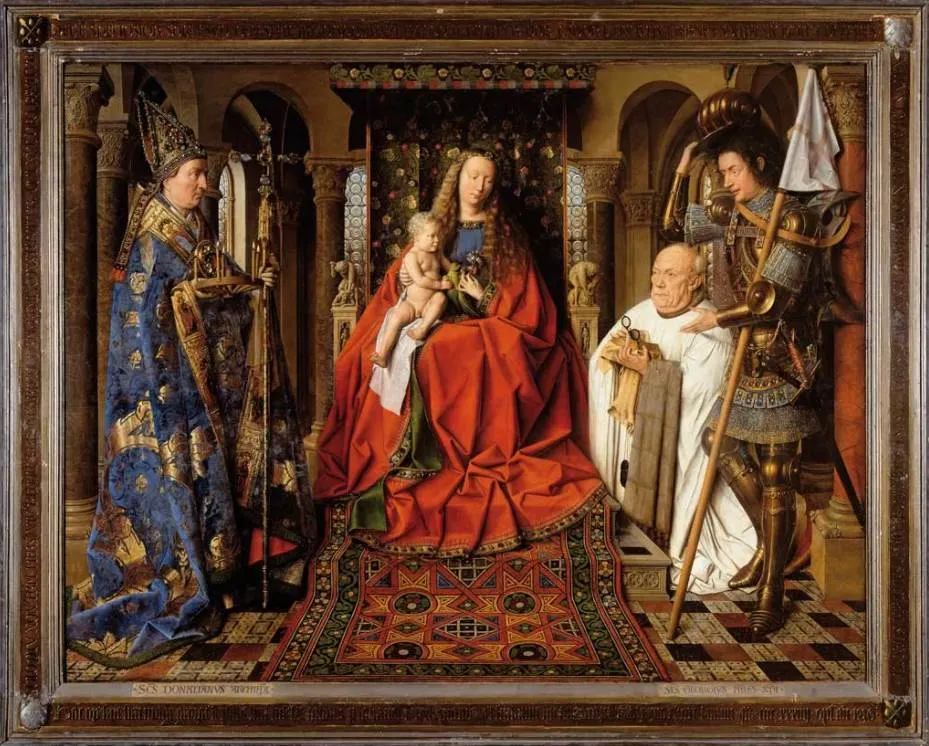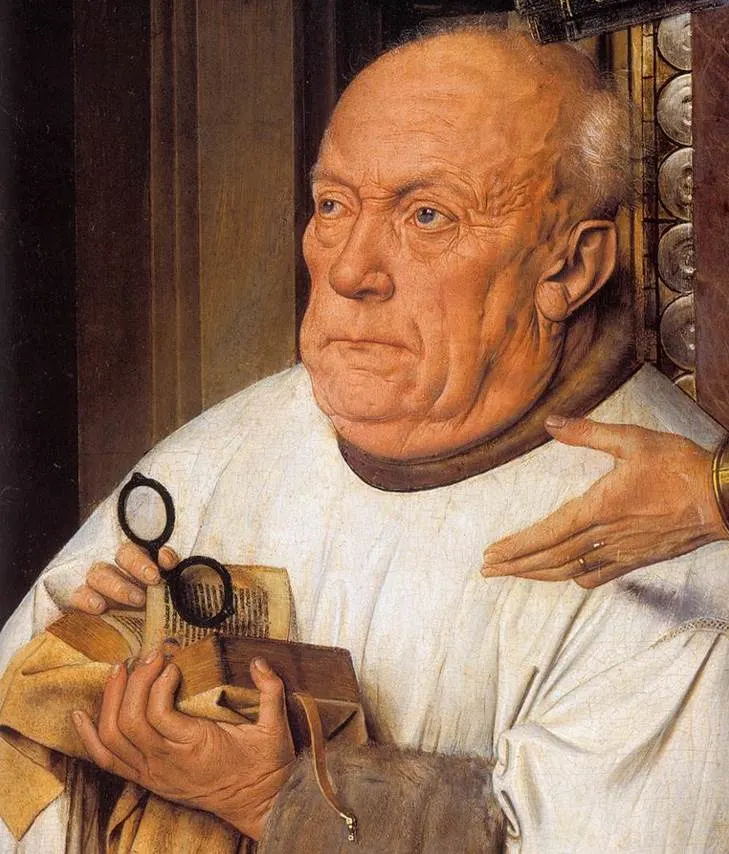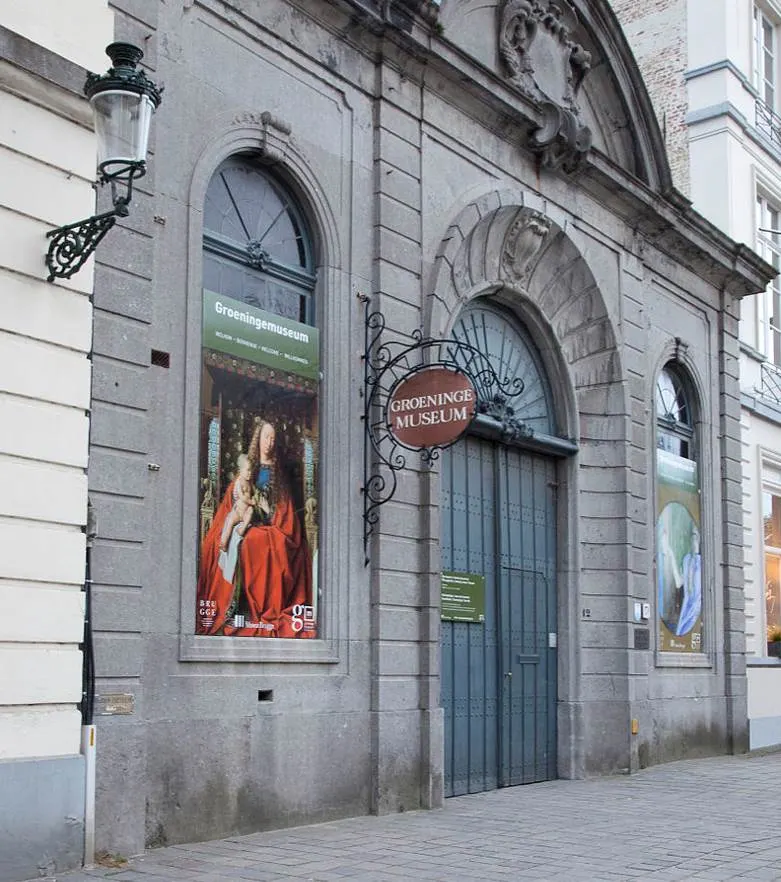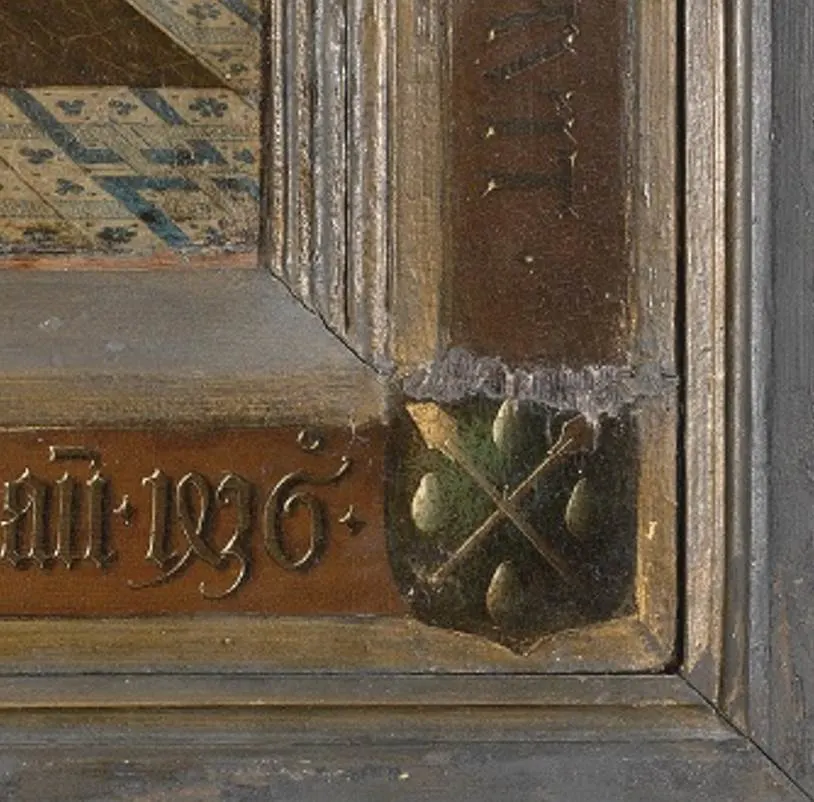One of the greatest attractions in the city of Bruges is one of the ultimate masterpieces by Jan van Eyck, The Early Netherlandish painter and master of the Renaissance in the northern part of Europe.
You have to see the amazing level of detail in a painting called “Virgin and Child with Canon van der Paele” to believe it. Especially considering that this painting is nearly 600 years old.
Let’s take a closer look at some of the most interesting facts about this treasure of the world painted by Jan van Eyck (1390-1441).
1. It was painted at the height of van Eyck’s career in the 1430s
Jan van Eyck moved to Bruges in the year 1425 after his employer, John of Bavaria-Straubing, died. His reputation was already so esteemed that he was able to become the court painter of Philip the Good, the Duke of Burgundy at the time.
This move only increased his fame and because he received a court salary, he was artistically free. This allowed him to become the leading artist of the northern Renaissance in the late 1420s and early 1430s.
He continued to receive private commissions throughout his career and was one of the most sought-after artists in the Low Countries by the mid-1430s. He completed Virgin and Child with Canon van der Paele, one of his ultimate masterpieces, between 1434 and 1436.

2. The man who commissioned it is seen kneelling on the right
The center of the painting is dominated by the enthroned Virgin Mary who is holding her Child Jesus Christ on her lap. She is accompanied by Saint Donatian who is seen standing on the left, and Saint George on the right.
The setting of the painting is a semicircular space which is most probably the interior of a church. This church was possibly the collegiate church of Saint Donation, the church of Canon Joris van der Paele.
The man kneeling on the right has been identified as Canon van der Paele based on inscriptions on the frame of the painting. He was born in 1370 and was gravely ill at the time the painting was completed.

That’s why it’s assumed that he commissioned it to serve as his memorial, although it also served as an altarpiece in his church in Bruges.

3. The artist included a large number of delicate religious symbols
The two saints presenting Canon van der Paele to the Virgin Mary is the main theme of the painting. This was a common theme in the early 15th century, something emphasized by a similar painting produced by Jan van Eyck called the “Madonna of Chancellor Rolin.”
Saint Donatitian was a 4th-century Saint and the Bishop of Reims who became the patron saint of the Diocese of Bruges. Saint George is the namesake of Joris van der Paele as “Joris” translates to “George” in Dutch.
Just like most other works by van Eyck, this painting is filled with delicate symbols related to the life of Jesus Christ. In general, the iconography on the left is a reference to his crucifixion, while the ones on the right refer to his resurrection.
Mary’s throne is decorated with carved figures that represent Adam and Eve. Other carved images of Cain beating Abel to death and Samson opening the mouth of a lion can be seen on the right.
The architectural elements above the columns depict scenes from the Old Testament, including the meeting of Abraham and Melchizedek and the Sacrifice of Isaac.

4. The frame of the painting is still original and inscribed by the artist
One of the most intriguing facts about Virgin and Child with Canon van der Paele is that it still resides inside its original frame. That’s also why we know Jan van Eyck completed this incredible work of art in 1436. The inscription on the lower section of the frame reads:
HOC OP ‘ FECIT MAGR GEORGI’ DE PALA HUI’ CANONI P IOHANNE DE EYCK PICTORE . ET FUNDAVIT HIC DUAS CAPELLIAS DE I GMO CHORI DOMINI . M . CCCC . XXXIIIJ . PL AU . 1436
There are also two inscriptions on the sides next to both saints. The one next to Saint Donatian reads:
SOLO P[AR]TV NON[VS] FR[ATRV]M. MERS[VS] REDIT[VR]. RENAT[VS] ARCH[IEPISC]O[PVS] PR[I]M[VS]. REMIS CONSTITVITVR. QVI NV[N]C DEO FRVITVR.
This translates to: “He was the youngest of nine brothers; thrown into the water, he returned to life and became the first archbishop of Reims. He enjoys now the glory of God.”
The inscription on the side of Saint George reads:
NATUS CAPADOCIA. X[PIST]O MILITAVIT. MVNDI FVG[I]E[N]S OTIA. CESU TRIVMPHAVIT. HIC DRACONEM STRAVIT.
This translates to: “Born in Cappadocia, he was a soldier of Christ. Fleeing the idleness/pleasures of the world, he triumphed over death and vanquished the dragon.”
5. It hung at the Louvre Museum in the late 18th and early 19th centuries
It’s unclear whether or not Joris van der Paele donated the painting to the church upon completion in 1436 or following his death in 1443. What we do know is that it decorated St. Donatian’s Cathedral from this time until it was destroyed during the French Revolution in the late 18th century.
The painting, one of the ultimate treasures of Bruges and a great attraction in the city for multiple centuries, was most probably moved to safety way before the French Revolution broke out and the church was destroyed in 1799.
It was, however, stolen from Bruges by the French in 1794, and decorated the Louvre Museum (briefly called the “Musée Napoleon” during Napoleon’s rule), until it was returned to Bruges in 1816.
Today, the painting is still one of the major attractions in the city as it’s on public display at the Groeningemuseum in Bruges.

More interesting facts about Virgin and Child with Canon van der Paele by van Eyck
6. Jan van Eyck was a very versatile artist as he was able to both produce delicate little works of art that could be easily carried by his patrons, as well as monumental works of art such as the Ghent Altarpiece.
This is a medium-sized painting as it has dimensions of 122 x 157 centimeters (48 x 61.8 inches) and 141 x 176.5 centimeters (55.5 x 69.5 inches) including the inscribed frame.
7. Although we can positively identify the kneeling man as being Joris van der Paele from historical documents, there’s another way we can do so. The coat of arms on each corner of the frame has been identified as the ones on both his paternal and maternal sides.

8. According to his last wishes, Joris van der Paele was buried in the Cathedral of Saint Donation in Bruges. This was also the final resting place of Jan van Eyck who had passed away 2 years earlier in 1441.
9. The extreme level of realism integrated by master Jan van Eyck must have been a revolutionary sight for people who were able to admire the work in the 1430s. The finery of clothing and especially the blue and gold robe worn by Saint Donatian on the left.
The artist repeated this mastery just a year later because the blue and gold robe worn by the Archangel in the “Dresden Triptych” (1437) looks very similar.
10. The red robe of Mary also features a Latin inscription that reads:
Est enim haec speciosior sole et super omnem stellarum dispositionem. Luci conparata invenitur prior.
This was derived from “Wisdom of Solomon 7:29” and translates to “For she is more beautiful than the sun, and excels every constellation of the stars. Compared with the light she is found to be superior.”

11. Joris van der Paele was gravely ill during the time this work was completed, even though he outlived the artist who painted it by two years. His swollen hands and enlarged arteries.
The detailed depiction of the man’s ailments allowed modern-day doctors to determine that he possibly suffered from both polymyalgia rheumatica and temporal arteritis.
12. One of the greatest fans of the painting during the early 16th century was Renaissance artist Albrecht Dürer (1471-1528) who praised the work in the early 1520s.
He wasn’t the only one, though, because Mary of Hungary (1505-1558), the wife of King Louis II and Governess of the Spanish Netherlands at the time, wanted to acquire it in the year 1547. The management of the church refused to sell it, claiming it would cause a severe outrage among the people of Bruges.
This is indeed one of the ultimate masterpieces in the world of art which allows you to stare at it for hours on end while continuously discovering new details, simply amazing!

